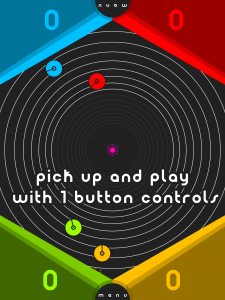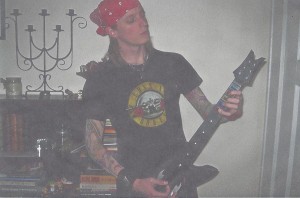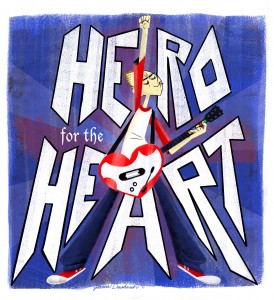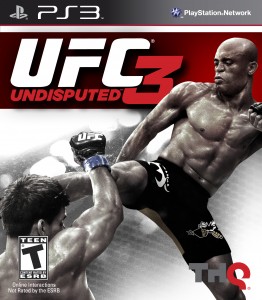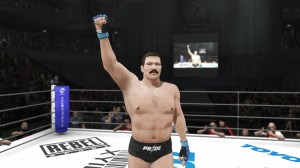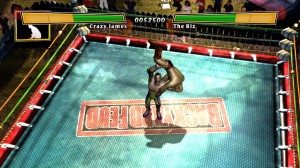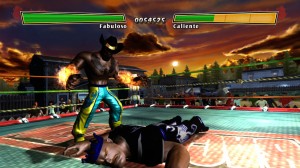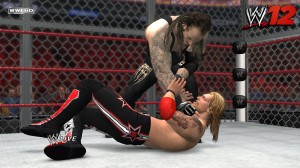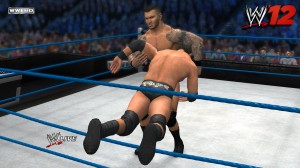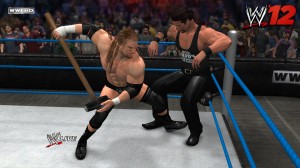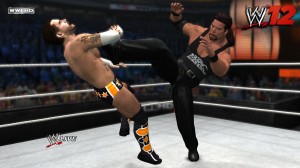A week or so ago, a pinball enthusiast friend of mine told me about this weekend’s inaugural Southern-Fried Gameroom Expo. Though I’m not an avid gamer these days, I did spend more of my youth than was likely healthy playing a variety of arcade games, pinball machines and home consoles. While my friend’s main interest in the SFGE is the International Flipper Pinball Association-sanctioned Southern-Fried Pinball Tournament, attracting pinball players from across the country, I soon realized there’s much more pop culture relevance to this event than one might expect. Sure, there’s a gaming area, high-profile gaming sponsors and other attractions for the Xboxers and Playstationers. But there are also film screenings, podcasters and other activities with enough pop cultural relevance that even casual video game fans are likely to find something of interest.
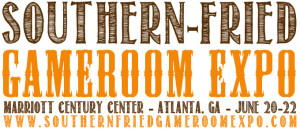 One of the more intriguing aspects for me is an appearance by Jerry Buckner, one half of the Buckner & Garcia duo responsible for the ’80s hit single “Pac-Man Fever” who has gone on to have an award-winning career in music, broadcasting, voice acting and more. Come to find out, he also happens to reside in the Atlanta area, not far from where I spent many days listening to my “Pac-Man Fever” record as a child. Buckner will be appearing at the SFGE for the first public screening of The King of Arcades on June 20, as well as a panel and meet-and-greet on June 21. Before he slides the proverbial quarter into this weekend’s festivities, Buckner talks to Wrestling with Pop Culture about his power pellet of a hit, almost writing music for WWE and returning to the video game world with Wreck-It Ralph.
One of the more intriguing aspects for me is an appearance by Jerry Buckner, one half of the Buckner & Garcia duo responsible for the ’80s hit single “Pac-Man Fever” who has gone on to have an award-winning career in music, broadcasting, voice acting and more. Come to find out, he also happens to reside in the Atlanta area, not far from where I spent many days listening to my “Pac-Man Fever” record as a child. Buckner will be appearing at the SFGE for the first public screening of The King of Arcades on June 20, as well as a panel and meet-and-greet on June 21. Before he slides the proverbial quarter into this weekend’s festivities, Buckner talks to Wrestling with Pop Culture about his power pellet of a hit, almost writing music for WWE and returning to the video game world with Wreck-It Ralph.
First of all, until a few days ago I was unaware that one of the guys who wrote “Pac-Man Fever” lived in the Atlanta area. How long have you lived in Atlanta and why did you move here?
I’m originally from Akron, Ohio. I had a guitar player/singer friend from Akron who moved to Atlanta and shortly after convinced me to come down and work here. This was back in the ’70s and he said there were some things going on in the music business here. I was very interested in that as a songwriter, so I came down and played in some local bands. Eventually, my schoolmate and friend from Akron, Gary Garcia, followed suit and came down with me and we began doing jingles, commercials and writing songs. That’s how “Pac-Man Fever” came about in 1982. We actually had a few minor successes prior to that, but nothing of the magnitude of “Pac-Man”. So that’s how I ended up in Atlanta and I never left. I’m still here.
I actually still have my 7-inch copy of “Pac-Man Fever” and never knew, as a kid, that you guys lived right down the street when you created it.
I lived in an apartment in Doraville when we wrote the song. We had been working at a studio in Marietta doing jingles and various things at the time and we went to dinner at this little place on the Marietta Square and that’s where we saw our first Pac-Man machine. We started playing it like everybody else and got hooked on it. At some point we thought, “Hey! Maybe it would be cool to write a song about this.” So we did and took it over to Arnie Geller and Buddy Buie. Buddy was the songwriter/manager/producer for the Atlanta Rhythm Section at that time. They liked the idea and we worked on the song in the front room of this little apartment in Doraville, then went in and recorded it. That’s how it all started.
So it wasn’t something you were hired to do to promote the video game?
No. We just took a shot at it. What we tried to do with that song was, we didn’t want to just do some kind of throw-out song and throw some sound effects in. We wanted to write a pop song that could stand up on its own legs pretty well musically, then add things in. It was just an idea we came up with and we did it.
Being from Akron, you’re certainly familiar with Devo. During that time there seemed to be a lot of bands like Devo and “Weird Al” Yankovic that were doing parody songs and things of that nature. Did any of that stuff influence you guys?
 I didn’t know Devo personally, but we had a connection to them. I had a band called Wild Butter in 1970 and the bass player’s brother opened up a studio and a bunch of groups came through the studio. Devo was one of the groups, unknown at the time, that came over and recorded. There were several groups from Akron that came over. In fact, Chrissie Hynde used to come out to where we used to play and she told us, “I’m going to be a star one day.” And eventually she was. Anyway, there was that time period when all those groups were recording in this little studio and it was pretty interesting to hear some of that early stuff. I can’t say there was influence, though. Gary and I grew up with the Beatles, pretty much like everyone else in our age group. And we loved blues and a lot of different kinds of music. We played together as a duo, we were in different bands together, you name it, we did it. We weren’t necessarily trying to write a novelty song as much as it was just an idea that came and we decided to do it.
I didn’t know Devo personally, but we had a connection to them. I had a band called Wild Butter in 1970 and the bass player’s brother opened up a studio and a bunch of groups came through the studio. Devo was one of the groups, unknown at the time, that came over and recorded. There were several groups from Akron that came over. In fact, Chrissie Hynde used to come out to where we used to play and she told us, “I’m going to be a star one day.” And eventually she was. Anyway, there was that time period when all those groups were recording in this little studio and it was pretty interesting to hear some of that early stuff. I can’t say there was influence, though. Gary and I grew up with the Beatles, pretty much like everyone else in our age group. And we loved blues and a lot of different kinds of music. We played together as a duo, we were in different bands together, you name it, we did it. We weren’t necessarily trying to write a novelty song as much as it was just an idea that came and we decided to do it.
We were working with an artist named Steve Carlisle, who also was from Atlanta, and he sang the theme to WKRP in Cincinnati. We were working on two different projects and recorded the extended version of the theme song with Steve. In fact, “WKRP” and “Pac-Man Fever” were, at one time, side by side on Billboard. But we weren’t necessarily influenced by Devo or any of those other groups. We just liked pop songs and tried to write a pop song utilizing Pac-Man.
I understand that the success of that song resulted in an entire album of songs inspired by video games. Tell me a little more about that.
We recorded “Pac-Man” and Buie-Geller shopped it to every label and nobody wanted it. They didn’t really know what Pac-Man was, which was part of the problem. So they put it out themselves, it got played on a local station and the song just exploded. People went crazy for it and within a few weeks CBS Records purchased the master and released it nationally right before Christmas. Right after the first of the year, when it became apparent it was going to be a national hit, they said, “Look, we really want an album to go with this.” We started working on an album and we wanted to do some regular songs. We recorded two songs and they sent the vice president down to listen to what we were doing and, “Oh, no. We want it to be all game songs.” We knew if we did that we would get labeled as just doing that, but we wanted to go along with the program. So we converted two of the songs to game songs, then created the rest of them and that was the album. It’s kind of an amazing thing because people know those album cuts, I’m not going to say as well as “Pac-Man,” but they know those cuts pretty well and like them and request them. So the whole album became kind of a pop culture phenomenon.
I read something about a song you wrote for E.T. The Extra-Terrestrial that confused me a little. Explain that song to me, if you don’t mind.
That was our nightmare story. E.T. came out the summer of ’82 and “Pac-Man” was a national hit while the movie was out. We went to see the movie and we were drawn into it like everybody else. It was a great film. I had this song I was working on about a family pet I had lost and out of sadness wrote this little melody on the piano about this dog. We got the idea we should do a song about E.T., so we took this melody and switched the concept to E.T. It came out as a very pretty ballad. They took it to CBS, CBS loved it and said, “This has got to be the next single.” Our manager flew to California to meet with Steven Spielberg to get his approval. They had the meeting and our manager told us Spielberg played it over and over again and Spielberg said, “I wish John Williams had come up with this song for the film.” When Arnie came back to Atlanta, he said, “I think they’re thinking about pulling the film back and putting the song in the film. Spielberg loved it!” We were all excited because that was going to be a major thing. Suddenly there was a fly in the ointment and within a couple of days problems developed. Neil Diamond, who was a huge artist at the time with CBS, had the “Heartlight” song. When CBS found out he had the song at the same time, of course he had the juice to get his song released ahead of ours. So CBS declined to release ours and “Heartlight” came out and took all of the thunder of the movie. They released our E.T. song a few months later and, ironically, where it was played, it still got tremendous reaction. But they didn’t promote it. They just let it die. So it was a very sad thing and we were very upset about it. It really drove a wedge between us and CBS and we got out of our contract because of it.
Did it appear on your next album?
Well, we didn’t do any more recording for CBS. We thought we had a deal with RCA, but we didn’t. So we decided just to go into production of other artists and groups. “E.T.” came out as a single, but was never on an album. We redid the Pac-Man Fever album in 1999 when CDs became big, we did another version of “E.T.” and it is on the current Pac-Man Fever
album as a bonus track. But it’s not the original.
What are the main differences between the original Pac-Man Fever album and the 1999 version?
When we did the original album, back in those days we didn’t have the ability to download stuff and get stuff off machines. We had to actually record it live off the machine. Those sound effects were kept with the masters and the masters were kept at Studio One, which I think was eventually sold to Georgia Tech. By 1999, those masters were so old that they could have brittle. They couldn’t find the sound effects track anyway, so we weren’t able to get those original soundtracks and we had to go in and try to find them. Some of them weren’t so easy to find in 1999. Most of them sound pretty close, but they’re not exactly the same. People who really know the album are kind of critical of us for not using the same thing. The problem is, CBS would not put the album out again because we had to get different licenses for that album from the different companies and they didn’t want to have to go back through all the legal problems to re-release it. But people wanted a CD version of it, so we decided to do it ourselves. So we had to try to recreate everything and it’s not going to sound quite the same, as hard as we try.
So, you also did a bunch of songs for the Waffle House jukeboxes. I always loved those songs.
I appreciate you saying that. They’re the type of pop songs Gary and I liked to write. Gary didn’t work with me much on that. He did do vocals on some of the tracks. That came about because Mary Rogers, who was married to Joe Rogers Jr., the owner of Waffle House, was an excellent singer and having a lot of success on her own. They got the idea to do some songs for the jukebox, so in ’84 she asked me to help out. We began doing songs for the jukebox and it turned out to be a good idea – people liked them and it was kind of a novelty when you came in there. We ended up doing a lot of those songs. Funny thing is, all my kids and their friends were more impressed by the Waffle House jukebox songs than anything else I’ve ever done. People seem to think that’s a pretty cool thing and I enjoyed doing them. We were still doing them up until about a year and a half ago. They’ve kind of put it on hold for now, so we’ll see what the future holds. Of course, they’ve changed that whole system and don’t have jukeboxes. It’s more of a digital computer thing that plays through the speakers.
A couple of years ago things kind of came full circle for you when you did a song for the video game-inspired movie Wreck-It Ralph. How did that come about? Was that a song you were already working on or something you did specifically for the film?
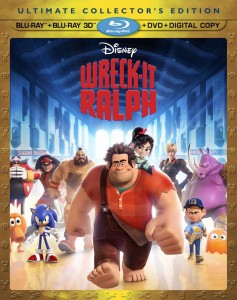 It was an amazing thing that occurred. I got a call from Tom MacDougall at Disney, who’s in charge of music, and Tom said they had this movie coming out and there was a song they were working on and it would be great if we did the song. Gary passed away suddenly in November of 2011, just prior to when Disney contacted us, so I wasn’t sure how it would work out. One of the guys in the band, Danny Jones, who plays drums and also is an excellent singer, talked about it with Gary’s widow and decided Danny could maybe sing the song. Disney was happy with that as long as it said Buckner & Garcia and it had the Buckner & Garcia sound. We all agreed to do it and there’s a producer in L.A. Disney used named Jamie Houston, who worked with a lot of big acts and several of the American Idol winners. He started on the song and sent it to me, we worked on it and completed it, then he flew in and produced the song. Disney loved what we did and included it in the soundtrack – it was actually the title track to the movie – as the number two song on the actual album. It was so sad Gary could not be part of that. He would have just been thrilled with it. But it’s opened a lot of new doors for us, which is greatly appreciated. To sit in the theater and see your name in the credits of a Disney film is just fantastic.
It was an amazing thing that occurred. I got a call from Tom MacDougall at Disney, who’s in charge of music, and Tom said they had this movie coming out and there was a song they were working on and it would be great if we did the song. Gary passed away suddenly in November of 2011, just prior to when Disney contacted us, so I wasn’t sure how it would work out. One of the guys in the band, Danny Jones, who plays drums and also is an excellent singer, talked about it with Gary’s widow and decided Danny could maybe sing the song. Disney was happy with that as long as it said Buckner & Garcia and it had the Buckner & Garcia sound. We all agreed to do it and there’s a producer in L.A. Disney used named Jamie Houston, who worked with a lot of big acts and several of the American Idol winners. He started on the song and sent it to me, we worked on it and completed it, then he flew in and produced the song. Disney loved what we did and included it in the soundtrack – it was actually the title track to the movie – as the number two song on the actual album. It was so sad Gary could not be part of that. He would have just been thrilled with it. But it’s opened a lot of new doors for us, which is greatly appreciated. To sit in the theater and see your name in the credits of a Disney film is just fantastic.
Just out of curiosity, have you ever done any work for WWE or anything wrestling related?
No, but I almost did. Funny you would even ask that. Back in the ’80s, after “Pac-Man Fever,” Arnie, our manager, was in New York and became Cyndi Lauper‘s manager. Of course, Cyndi was one of the main people that got that whole wrestling thing happening on TV in the ’80s with Vince McMahon. Arnie used to laugh about some of the guys that would come by the office to see her. “Rowdy” Roddy Piper used to come by all the time and Arnie liked Rowdy, said he was a pretty good guy. At one point, Arnie said they needed a theme song. So we put something together and sent it up there, but they really were looking for more raw rock ‘n’ roll kind of stuff and we were more pop/top 40 kind of stuff. So that didn’t work out for us at that time, but we almost did it.
They have an in-house composer named Jim Johnston who does probably 99 percent of WWE’s music now.
If there’s one guy doing it, I think he’s doing a great job. I love watching Monday night Raw. It’s fun to watch and the music matches up great with each of the characters, so I’d say he’s doing a great job.
The inaugural Southern-Fried Gameroom Expo is this weekend and you’re going to be a big part of it. What exactly will your role be at this event?
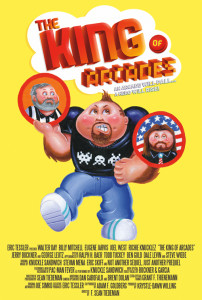 When I was approached last fall, they wanted me to come by and hang out, maybe do some question-and-answer deals, sign some autographs, talk to people and just kind of be there on Saturday. In addition to that, there’s a documentary called The King of Arcades. Sean Tiedeman, an independent filmmaker, co-produced it with Adam Goldberg, who does The Goldbergs show on ABC. They put this film together and asked me to be in it to talk about our album, which I did. They’re screening that film on Friday. It’s a great film about ’80s video games and a guy named Richie Knucklez, who is very well known in the game industry – he’s had arcades, he’s had a band. Richie re-cut “Pac-Man Fever,” but it’s a straight-ahead rock ‘n’ roll kind of thing, and that’s in the film at the end. Billy Mitchell’s in it, he’s the top video game player of all time, with a bunch of other people. So I’m looking forward to that and looking forward to meeting people and hanging out. Incidentally, these conventions are starting to happen more now and we’ve had invitations from Houston and Dallas later on in the year and they want the band to come play. We really weren’t prepared to do that at this show in Atlanta, but we may actually go play in Houston and Dallas and see what happens. It’s fun to be part of all this. We kind of became a part of pop culture with the video game attachment and it’s fun. I love doing it.
When I was approached last fall, they wanted me to come by and hang out, maybe do some question-and-answer deals, sign some autographs, talk to people and just kind of be there on Saturday. In addition to that, there’s a documentary called The King of Arcades. Sean Tiedeman, an independent filmmaker, co-produced it with Adam Goldberg, who does The Goldbergs show on ABC. They put this film together and asked me to be in it to talk about our album, which I did. They’re screening that film on Friday. It’s a great film about ’80s video games and a guy named Richie Knucklez, who is very well known in the game industry – he’s had arcades, he’s had a band. Richie re-cut “Pac-Man Fever,” but it’s a straight-ahead rock ‘n’ roll kind of thing, and that’s in the film at the end. Billy Mitchell’s in it, he’s the top video game player of all time, with a bunch of other people. So I’m looking forward to that and looking forward to meeting people and hanging out. Incidentally, these conventions are starting to happen more now and we’ve had invitations from Houston and Dallas later on in the year and they want the band to come play. We really weren’t prepared to do that at this show in Atlanta, but we may actually go play in Houston and Dallas and see what happens. It’s fun to be part of all this. We kind of became a part of pop culture with the video game attachment and it’s fun. I love doing it.
You’ve also done a lot of voice acting. Do you have any new or upcoming projects in voice acting, music or elsewhere?
I got into radio for a while by accident. I did it for fun, then people said, “Hey, we’ll pay you.” Then I got into voice acting, which is a little bit different than doing voice-overs because you’re actually doing characters. I enjoy doing it. As far as that goes, I’m doing a variety of different things. I was the narrator for a History Channel show called Big Shrimpin’, which ran for eight episodes. What I’m really excited about musically, because of the Disney track, we’re working on some new stuff. I really can’t say the names of the projects because they don’t want us to. But there’s going to be a couple of new songs about some huge games. It won’t be Buckner & Garcia; it’s going to be younger artists singing. We’re working on that project and that should be a lot of fun once we get that out.
www.jerrybuckner.com
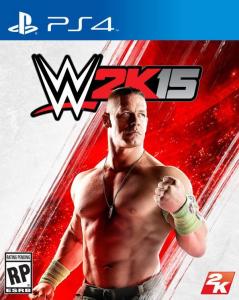 I received my copy of WWE 2K15 on PlayStation 4 and my first impression was great. For my first match, I chose Bray Wyatt and my opponent was John Cena. As soon as the entrances started, I knew that the graphics were a massive jump up in quality from the previous games on last-gen consoles. The whole look and feel of 2K15 is a huge accomplishment for capturing the intensity of a real match. The best thing about 2K15 is how it showcases what we have to look forward to graphically with the next-gen wrestling games.
I received my copy of WWE 2K15 on PlayStation 4 and my first impression was great. For my first match, I chose Bray Wyatt and my opponent was John Cena. As soon as the entrances started, I knew that the graphics were a massive jump up in quality from the previous games on last-gen consoles. The whole look and feel of 2K15 is a huge accomplishment for capturing the intensity of a real match. The best thing about 2K15 is how it showcases what we have to look forward to graphically with the next-gen wrestling games.




